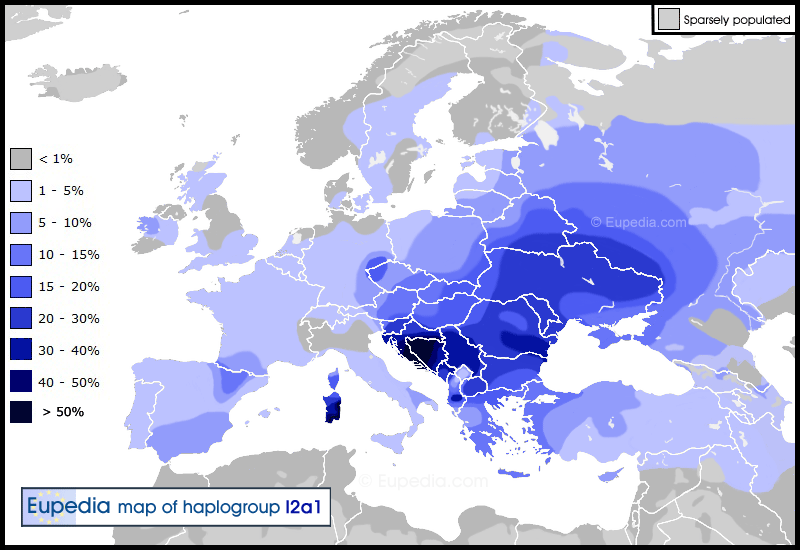how yes no 2
Junior Member
- Messages
- 863
- Reaction score
- 3
- Points
- 0
hey, how yes no could you psot the exact percentages of all haplogroups found in serbia and montenegro from that study you posted as i cant read it... need to pay for it
I can access the article...
But if you do not trust data I have put here, you can use supplementary tables (those everyone can access) and calculate yourself percentage... it is fairly easy calculation (just counting number of samples belonging to certain haplogroup and dividing it with total number of samples)... pay attention that rows are not per sample but per exact value for markers, and thus in front of every row is a number showing how many samples with this exact set of markers are found... thus if number is 2 that row needs to be counted twice...
edit:
I just realized that data is not actually posted on this topic, and that you wanted to see it...
haplogrroup____Serbia____Montenegro
I1_____________7.8%_____6.2%
I2b1___________1.67%___1.73%
I2a2 __________38.5% ___29.2%
E1b1b _________ 17.3%___27.0%
R1a____________14.5%____7.4%
R1b____________ 4.5%____9.4%
J1______________0.6% ___0.5%
J2a ____________3.3%____4.7%
J2b ____________1.7% ___4.5%
G2a____________2.2%____2.5%
N ______________3.3% ___1.5%
Q _____________1.7%____2.0%
H______________2.2% ___1.5%
L_______________0.6%____1.2%
http://onlinelibrary.wiley.com/doi/10.1002/ajpa.21235/suppinfo
Last edited:











